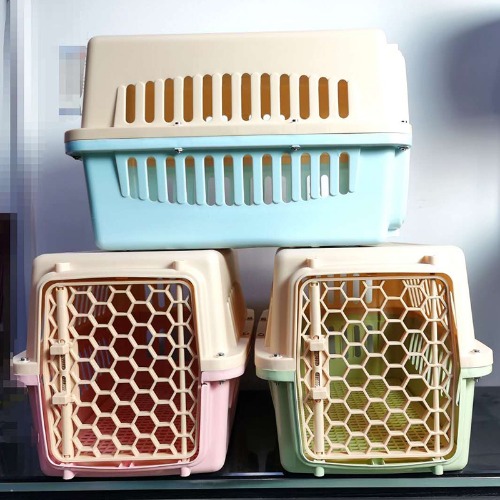Even if your portable aircraft cage meets airline compliance and your pet carrying cage seems well built, missteps in preparing or handling can cause to denied boarding, stress to your pet, or safety risks. Airlines increasingly scrutinize pet carriers, and many pet owners share stories online of being turned away at the gate because their carrier was non-compliant.
To avoid such pitfalls, applying careful handling and planning is crucial. Let’s walk through the ideal practices step by step.

1. Pre-Flight: Choosing & Preparing the Carrier
Confirm Airline Requirements Early
Each airline has its own rules for pet carriers. Before purchasing or selecting a Pet Carrying Cage (or Portable Aircraft Cage for cargo or checked use), review the airline’s pet policy — allowable dimensions, materials, ventilation, door style, etc.
Size It Right
Your pet must be able to stand, turn around, and lie down — this is a standard across many airline and regulatory guidelines.
As a rule of thumb, choose a carrier slightly larger than the minimal requirement to allow for comfort, without risking noncompliance.
Use a Strong, Compliant Container
For a Portable Aircraft Cage intended for checked or cargo use, opt for rigid materials (plastic, metal, or wood) and avoid collapsible or soft carriers.
Ensure all doors and latches are secure (metal bolts or screws preferred over simple snaps).
Ventilation should be present on multiple sides (3 sides for domestic, often 4 sides for international flights).
The carrier floor must be leakproof, and lined with absorbent pads.
Attach food and water bowls inside the door so caretakers can access them without opening the carrier.
Label the carrier clearly with “Live Animal” stickers and orientation arrows.
Acclimate the Pet
Introduce your pet gradually to the chosen Pet Carrying Cage. Let them explore it at home, reward calm behavior inside, and practice short stays. This reduces anxiety when the actual travel comes.
Also, ensure your pet is comfortable with being confined while still having visibility and airflow.
2. Day of Travel: Feeding, Hydration & Check-in
Feeding Strategy
Offer a light meal a few hours before drop-off rather than immediately before. Many airlines require that the pet be offered food and water within 4 hours before the handover.
Avoid overfeeding so your pet is less likely to have digestive distress en route.
Hydration
Always attach water inside the cage, and if allowed, consider a little extra strapped water for delays. Avoid bottles that leak or spill.
Arrive with Buffer Time
Check with your airline how early to arrive. You’ll need time for inspections, cage checks, and documentation. Overcrowded airports or flight delays can add stress, so plan ahead.
Health Certificate & Documentation
more airlines require a health certificate issued within a certain window (e.g., within 10 days) confirming the pet is fit to fly.
Pack also vaccination records, identification, and written feeding/watering instructions. Affix these documents to the outside of the cage in a clear pouch.
3. At the Airport & Boarding
Inspection of the Carrier
Airport staff may inspect your Portable Aircraft Cage or Pet Carrying Cage to confirm it meets their safety criteria (sturdiness, ventilation, secure locks). Carryers that fail may be rejected at the gate.
Security Screening
You may be asked to remove the pet from the cage for security screening while the empty carrier is passed through X-ray. Be sure to have a leash or harness ready.
Boarding & Placement
If your pet travels in-cabin, the Pet Carrying Cage must stay under the seat in front of you for takeoff, landing, and throughout the flight.
If checked or cargo, your Portable Aircraft Cage must be placed upright, secured, and not obstructed. Avoid stacking heavy luggage on top.


 English
English Español
Español Deutsch
Deutsch

